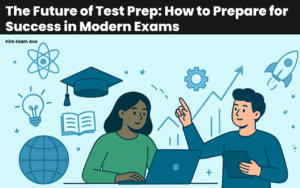Discover the Core Duties and Responsibilities of Students
Education is more than just going to school and getting a respectable grade, it’s about learning concern, discipline, and honesty. Every learner has tasks that improve their individual maturity and the overall well-being of the learning community. This knowledge helps students become well-behaved, goal-driven and socially responsible residents.
In this post we look at what roles do students play in schools. More than just about punctuality and respect, but rather responsibilities of being accountable for ourselves and participating in our communities, each one is important because they all contribute to a child growing into a responsible citizen and future leader.
To Be Punctual and Respectful
Punctuality and respect are the basic duty of every student. Being present is discipline and a sign that I take studying seriously. Regularity in attending classes and at the same time to send assignments on a regular basis as well show dedication.
(Respect, by the way, is what great relations in any school are constructed upon. By showing respect to tutors, fellow students and school belongings, an atmosphere conducive to learning can be created. When students are well-mannered in their communications, refrain from interjecting teachers during instruction and reflect the opinions/feelings of others they also earn admiration for themselves and a wisdom of community with others.
Be an Active Citizen
Education is not a gurgle in the world. A responsible student understands that being an active resident — conducive to the community, representative social consciousness — is significant.
This would include attractive in community service, indicating an essence of volunteerism and helping to fulfill civic tasks. Students need to be conscious of current events and make careful choices concerning the influence their lives will have on those around them. Small steps, like supporting friends, keeping the school tidy or contributing in a leafleting drive bolster feelings of nationality.
Active citizenship also implies being respectful of cultural diversity and tolerance. In our global society, a good student and thoughtful citizen cannot be formed without both inclusivity and understanding.
Giving Thought to the Future Is Crucial
Furthermore, a student has a major responsibility to forecast and anticipate the future. Since education on its own is not powerful enough to shape one’s destiny, the discipline of foresight is what shapes destinations. Students fight to achieve their dreams and aspirations as soon as they set out a dream. In that regard, they should formulate achievable goals and articulate short-term and long-term strategies to advance in academic life and their career . Such needs call for self-awareness and a personal trait of reflecting on their performance.
A student should know their strengths and weaknesses such that they keep improving. They may also be good at leveraging strengths to their innovation. In that respect, a guidance counselor, teacher, and student assist learners to bridge their dreams to their physical abilities. Additionally, good study habits and time management, as well as a balance in the school-life indicators, rest on a student’s ability to focus on the future. This attribute is not possible without safe integration of the thought about the sense of responsibility in decisions made today
Learn to Take Self-Accountability
The fundamental for human beings is self-responsibility and accountability. A responsible pupil takes responsibility for their actions, successes and failures. Responsible students don’t point the finger they look to themselves and how they behave.
With reference to yourself means to attend classes, finish your work without being prompted and own up to mistakes. Accountability, for instance, means reviewing the reasons a student may not have done well on an exam (lack of preparation or distraction, say) and finding constructive ways to address them.
Honesty and making up for mistakes without excuses are traits that teachers admire in children. This attitude fosters integrity, confidence and emotional intelligence — qualities that help lead to lifelong success.
Meet Education Excellence
Pursuing academic goals is the joint responsibility of both the school and learners. Though schools and universities open the doors to inspire, it is the student who must walk through them. Academic achievement is not merely about earning high grades; it reflects an ongoing dedication to learning.
Students should engage deeply with their subjects, conduct research, and remain curious beyond the curriculum. They must also seek feedback from teachers to strengthen comprehension. Hard work, commitment, and persistence are the greatest strengths leading to educational success.
Responsible students never look for shortcuts or try to hire someone to do exam tasks on their behalf; instead, they demonstrate discipline, plan their study time wisely, and stay organized regardless of challenges. This approach ensures not only academic success but also holistic intellectual growth.
Obey Your Teachers
Teachers are the main agents which influence an individual’s knowledge, perceptions and beliefs. Listening to teachers means to recognize their experience and the authority they have. Listening to directions in school, sitting still, and paying attention during a lesson are examples of responsible behaviours.
Obedience is not blind obedience but one that recognises structure and discipline required for effective learning. Students who adhere to directions, who respect feedback, and take teachers’ suggestions seriously get a more focused education.
Additionally, trust and open communication is developed by teachers treating students with respect. This relationship also yields the benefits of character and responsibility as well.
Support Classroom Culture
Each classroom is a micro-community, and its success depends on the collective. Classroom culture refers to making a positive community in which everyone feels safe, respected and eager to learn.
Students are expected to work together, not be disruptive and help keep things clean.. They should celebrate the successes of others and provide support when classmates struggle. Promoting team work, empathy and inclusivity will be beneficial for all students to do well together.
The same class culture rests also, upon mutual accountability. Good students follow rules, participate appropriately and promote good behavior. Having a positive class culture is beneficial not only to learning how to lecture for us but also in working together and being personally developed.
Ask Questions
Curiosity drives knowledge. Questioning is an indication of a thinking and responsible learner. He takes interest in learning not just by heart but also from the heart. Students need to be able to ask questions if they are confused about material and should feel comfortable waiting for a little extra help, or voice their concerns in open discussion.
The need for carefully crafted and insightful questions is an essential element to promote depth of understanding as well as critical thought. It also enables teachers to see where students are struggling and need more direction.
When they are curious, students own their learning. This practice encourages analytic, creative and confident scholars — all of which are crucial traits for success in both school and career!
Participate Actively
The initiation of class work, projects and extra-curricular activities indicates initiative and accountability. Students who provide ideas, work as teams and volunteer for jobs develop leadership skills and strong communication.
Participation doesn’t have to be limited to the class — attending seminars, joining clubs and even entering into debates can open students’ minds. It also deepens self- expression and connection.
Responsible participation takes some preparation and thought. Participating in reading the assigned text, doing your tasks on time and actively listening during discussions are small gestures that show you’re involved in the class. Active participants contribute to the learning experience not only their own but others’ knowledge.
Accept Responsibility for Yourself
And of course one responsibility that trumps all others is self-responsibility. It is about keeping in control your emotions, deeds and choices. A big part of the equation is students realizing that their success is not out of their hands.
Taking individual responsibility also involves being honest, keeping to deadlines and having academic integrity. It’s also about self-care — how much to study, rest and play in order to keep it all together.
Using self reflection to encourage students to hold themselves accountable can help them develop more independence and cause less anxiety. They don’t depend on outside motivation anymore, but rather lay their own inner drivers and focus. It’s a life preparation- when they grow, that kind of self-control will be necessary.
How to Explain Responsibilities to the Students
Teachers and parents play a dynamic role in helping students recognize and practice duty. Clear communication and dependable fortification make an important difference. Below are some strategies to efficiently clarify the thought of obligation to learners.
Explain the Meaning
Education, it seems, needs to begin with an explanation to kids about what responsibility really is. It’s important for students to internalize responsibility as a positive trait — something they can be proud of. Understand what your student means by being responsible in their own words and way, don’t let them equate it with feeling burdened or not able to have fun. Teachers might define it as the ability to take responsibility for one’s actions, make ethical decisions and contribute positively to a community.
Practical illustrations of this value include: meeting homework time limit, taking care of one’s personal property, or supporting others. The thought that accountability builds trust and self-respect can be reinforced with the help of visual support, debate, and storytelling.
Be a Problem Solver
Helping students to develop as problem solvers in this activity promotes responsibility. Students do need to be able to assess situations, consider options, and take appropriate actions when they encounter challenges rather than always sit back and expect others to solve things.
Teachers may use acting out a situation or group activities in decision-making. They fosters prompts action, confidence and responsibility. Problem solving is a life skill that can be nurtured and developed by regular experience and coaching..
Discuss Responsibility with Students
Regular conversations about responsibility bring the concept back into their minds. Teachers can convene class meetings to discuss concrete examples where responsibility was shown, or not. Reflection sessions offer the opportunity for students to debrief and learn from each other.
Open communication promotes honesty and self reflection. When responsibility is debated among students, they are likely to accept that it does matter. These chats also help teachers spot where students may need extra support or a boost.
Rewards Program
Positive reinforcement is such a strong element in training for responsibility. When students have respectful behavior rewarded they are encouraged to strive towards being an accountable student. Rewards don’t have to be physical ones, words of encouragement, certificates or even leadership roles are just as rewarding.
Creating a rewards system provides structure. For instance, in the Saturday Academy Experience Program (SAEP), a “Responsibility Chart” is posted in the classroom to monitor students’ growth and reinforce positive behavior. And when responsibility is associated with recognition, students internalize it as part of their nature.
Relate Their Decisions to the Repercussions
Consequences are part of responsibility. Schoolchildren need to be taught that every decision — good or bad — has consequences. Discussing the impact of their choices encourages them to think critically before acting.
Teachers may use case studies or storytelling to demonstrate that responsible behavior is linked to success, while neglect often leads to setbacks. In the same way, students preparing for major assessments, such as the HESI exam, should understand that relying on unethical shortcuts like trying to pay someone to take my HESI exam can result in serious consequences.
Instead, learning from mistakes, practicing consistently, and reflecting on personal growth foster accountability. Over time, this process builds empathy, moral judgment, and emotional maturity.
Promote Moral Standards
There is a very close connection between ethical education and concern. Encouraging honesty, respect for others and fairness and responsiveness lays a strong moral groundwork. Students must understand that concern means not just observing rules but doing the right thing even when no one is watching.
Moral instruction can be worked into everyday teaching. For example, talking about historical or literary instances of responsible conduct makes it more real to students. If a community’s morality is upheld consistently then responsibility becomes part of a student character and not just the ‘thing we have to do.
Conclusion
Students go beyond extraction. Students aren’t just about desk glue. Attitude, behavior, social-awareness and ethics are all grouped together by them. Being on time, respectful, self-responsible, and actively engaged is important in promoting growth and growth in the classroom.
Teachers and parents who are the key instructional partners in educating students at Middle Childhood school based on values such as honesty, hardwork and responsibility- then students grow up responsible for their own self disciplined life that benefits the society. Education is essentially not learning, not gathering knowledge but generating responsible citizens who can decide the future in a better manner.
When they accept that responsibility, students not only perform well academically but also develop into caring, responsible citizens and morally sound persons — a true gauge of educational success.
FAQs
1. What are the main responsibilities of a student?
The primary responsibilities of a student include being punctual, respectful, and accountable for their actions. They should participate actively in class, obey teachers, support a positive classroom culture, and consistently strive for educational excellence. These habits develop discipline and prepare students for both academic and personal success.
2. Why is punctuality important for students?
Punctuality is a sign of discipline and commitment. When students arrive on time for classes and meet deadlines, they demonstrate responsibility and respect for others’ time. This habit not only improves academic performance but also builds reliability—an essential skill for future professional life.
3. How can students learn to take accountability for their actions?
Students can develop self-accountability by reflecting on their performance, admitting mistakes, and making conscious efforts to improve. Keeping track of deadlines, preparing in advance, and seeking feedback from teachers are effective ways to strengthen accountability and independence.
4. What role does respect play in a student’s life?
Respect forms the foundation of a healthy learning environment. When students respect their teachers, peers, and school property, they create a positive atmosphere for cooperation and growth. Respect also builds strong character and fosters empathy, which are crucial for lifelong success.
5. How can teachers explain responsibility to students effectively?
Teachers can explain responsibility through real-life examples, discussions, and role-modeling. Encouraging students to make independent decisions, solve problems, and understand the consequences of their actions helps them internalize the concept. Positive reinforcement, such as rewards or praise, further motivates responsible behavior.
6. What are some ways students can support classroom culture?
Students can support classroom culture by promoting teamwork, showing respect during discussions, and maintaining cleanliness and order. Helping classmates, following rules, and celebrating others’ successes foster a sense of belonging and make the classroom an enjoyable and productive place to learn.
Read More: How AI for Exam Preparation is Changing the Way Students Study










